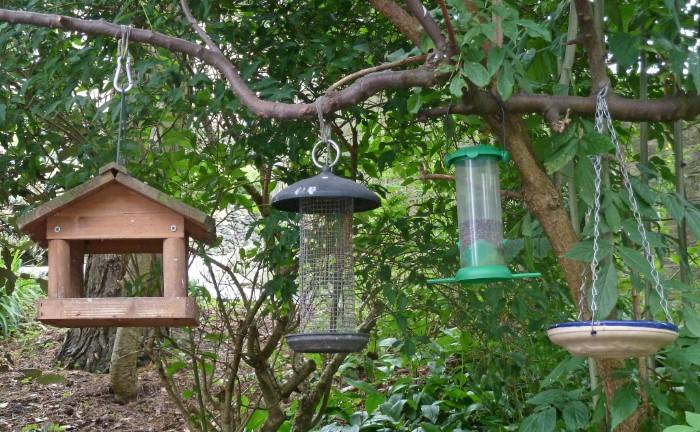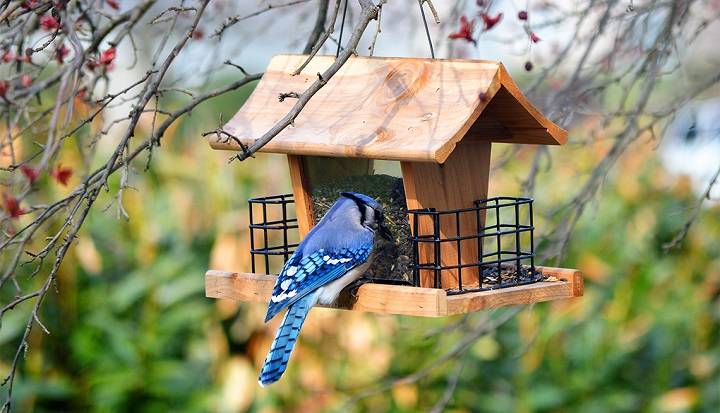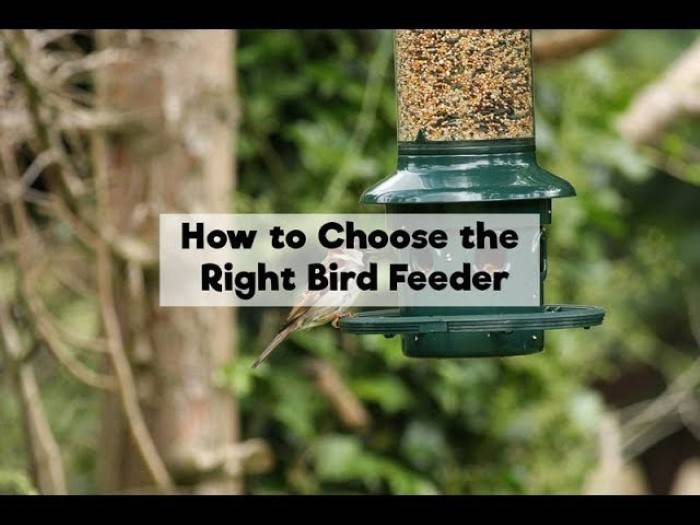Bird feeders are a delightful addition to any backyard or garden, attracting a diverse array of feathered visitors and providing bird enthusiasts with hours of enjoyment. Whether you’re a seasoned birder or new to the hobby, choosing the right bird feeder and understanding how to maintain it can make a significant difference in the success of your bird-watching endeavors. In this comprehensive guide, we’ll explore the various types of bird feeders available, discuss the best placement strategies, offer maintenance tips, and provide creative ideas to enhance your bird feeder experience.
Understanding Bird Feeder Types

Hopper Feeders:
Hopper feeders are one of the most popular types of bird feeders, featuring a chamber that holds bird seed and a platform or tray where birds can perch and feed. They attract a wide variety of bird species, including sparrows, finches, chickadees, and cardinals.
Tube Feeders:
Tube feeders consist of a clear plastic or glass tube with feeding ports where birds can access seeds. They are ideal for offering nyjer seeds to finches and other small birds, as well as sunflower seeds for larger species like cardinals and woodpeckers.
Platform Feeders:
Platform feeders are open trays or platforms that accommodate a variety of bird seed, suet, fruits, and mealworms. They attract ground-feeding birds such as juncos, doves, and sparrows, as well as perching birds that prefer an open feeding area.
Suet Feeders:
Suet feeders are designed to hold blocks or cakes of suet, a high-energy food made from animal fat mixed with seeds, grains, and fruits. They are favored by woodpeckers, nuthatches, chickadees, and other insect-eating birds, especially during the winter months.
Nectar Feeders:
Nectar feeders are specifically designed to hold sugar water solutions for hummingbirds and orioles. They typically feature small feeding ports and perches that accommodate the unique feeding behaviors of these nectar-feeding birds.
Choosing the Right Bird Feeder
Consider Bird Species:
Identify the bird species you wish to attract to your feeder and choose a feeder type and food offerings that cater to their dietary preferences and feeding behaviors. Research local bird populations and their preferred foods to inform your decision.
Quality and Durability:
Invest in high-quality bird feeders made from durable materials such as metal, wood, or sturdy plastic. Look for feeders with sturdy construction, tight-fitting lids or covers, and easy-to-clean designs that withstand the elements and last for years.
Capacity and Size:
Consider the size and capacity of the feeder based on the number of birds you expect to attract and the frequency of refilling. Choose larger feeders for high-traffic areas or opt for smaller feeders for a more intimate feeding experience.
Placement Strategies for Bird Feeders
Location:
Place bird feeders in a quiet, safe, and accessible location away from potential hazards such as predators, reflective surfaces, and high-traffic areas. Position feeders near natural cover, such as trees, shrubs, or garden plants, to provide birds with shelter and protection while feeding.
Height and Visibility:
Hang or mount feeders at varying heights to accommodate different bird species and feeding behaviors. Ensure feeders are visible and easily accessible to both birds and human observers for optimal viewing and enjoyment.
Spacing and Grouping:
Space multiple feeders at least six feet apart to prevent crowding and territorial disputes among birds. Group feeders with similar food offerings or feeder types together to create feeding stations that cater to different bird preferences.
Maintenance and Care Tips
Regular Cleaning:
Clean bird feeders regularly using a mild detergent solution and a brush to remove debris, mold, and bacteria buildup. Disassemble feeders as needed, rinse thoroughly, and allow them to dry completely before refilling with fresh food.
Seed Management:
Monitor seed levels and remove old or moldy food from feeders to prevent spoilage and waste. Store bird seed in a cool, dry place in airtight containers to maintain freshness and discourage pests.
Water Source:
Provide birds with access to clean drinking water by incorporating a bird bath, shallow dish, or water feature into your feeder setup. Change water frequently to prevent stagnation and algae growth, especially during hot weather.
Bird Feeders
Creative Ideas to Enhance Your Bird Feeder Experience
DIY Projects:
Get crafty with DIY bird feeder projects using recycled materials such as milk jugs, tin cans, and pine cones. Explore online tutorials and design ideas to create unique and personalized feeders that reflect your creativity and style.
Seasonal Decorations:
Add seasonal decorations to your bird feeders, such as holiday-themed ornaments, decorative ribbons, and natural accents like pine cones and berries. Create a festive atmosphere that celebrates the changing seasons and enhances your backyard or garden decor.
Educational Opportunities:
Use your bird feeder setup as an educational tool by incorporating bird identification guides, nest box plans, and informational signage into your feeder station. Encourage learning and discovery about local bird species and their behaviors while fostering a deeper connection to nature.
Related Post:
Discovering the Enigmatic World of Rare Duck Breeds
The Essential Guide to Pet Ducks: Care, Behavior, and Joys of Keeping Ducks
Discovering the Distinctive Charm of Aylesbury Ducks: A Classic Duck Breed
Bird feeders are a wonderful way to attract and observe a wide variety of bird species in your backyard or garden. By choosing the right feeder types, selecting appropriate food offerings, and implementing effective placement and maintenance strategies, you can create a welcoming environment that supports the health and well-being of your feathered visitors. Whether you’re a novice bird enthusiast or a seasoned birder, the joy of watching birds gather and feed at your feeder is a rewarding experience that fosters a deeper appreciation for the natural world. Let your bird feeder be a beacon of hospitality for your avian neighbors as you embark on your journey of backyard birding adventures!



